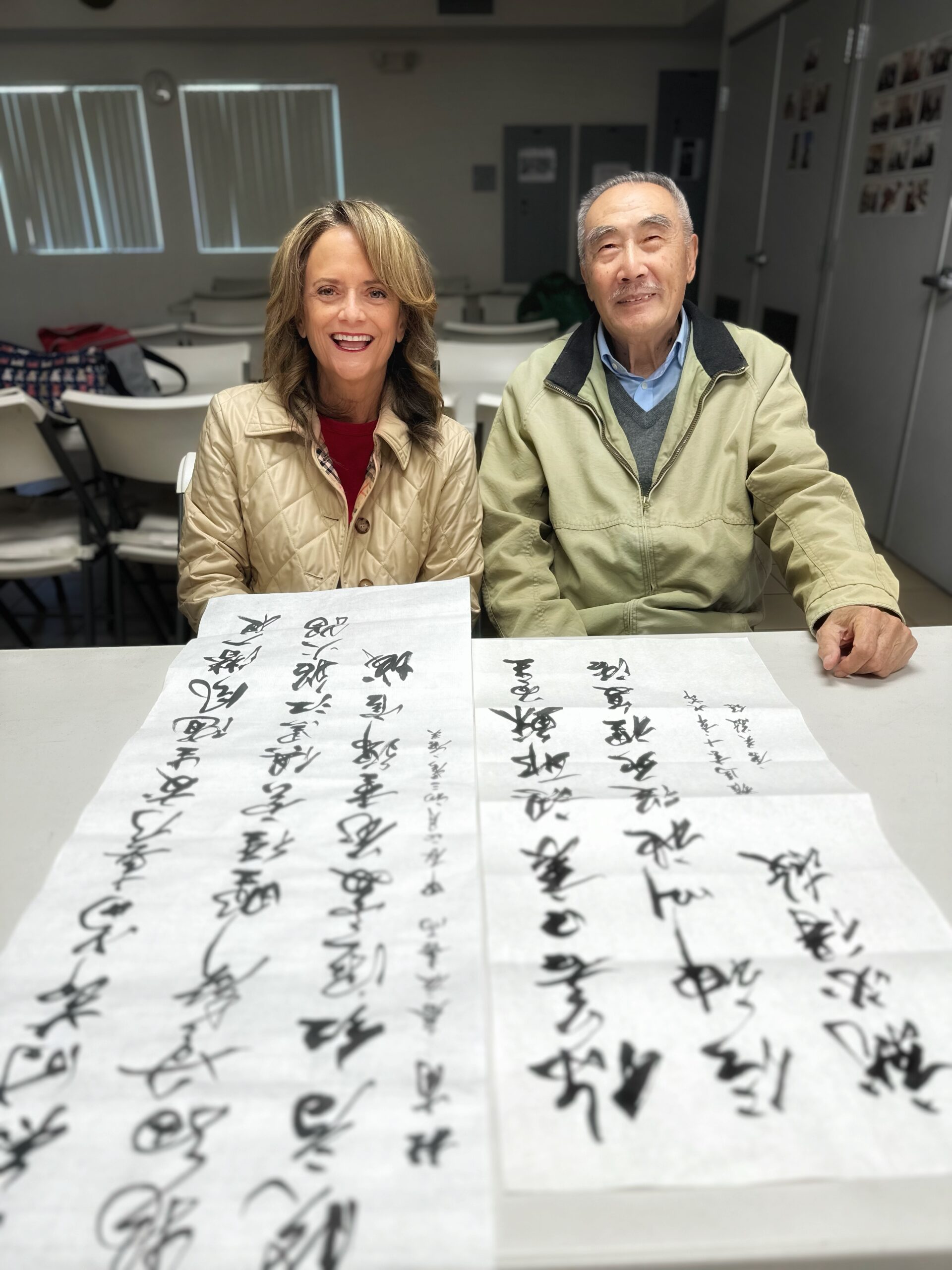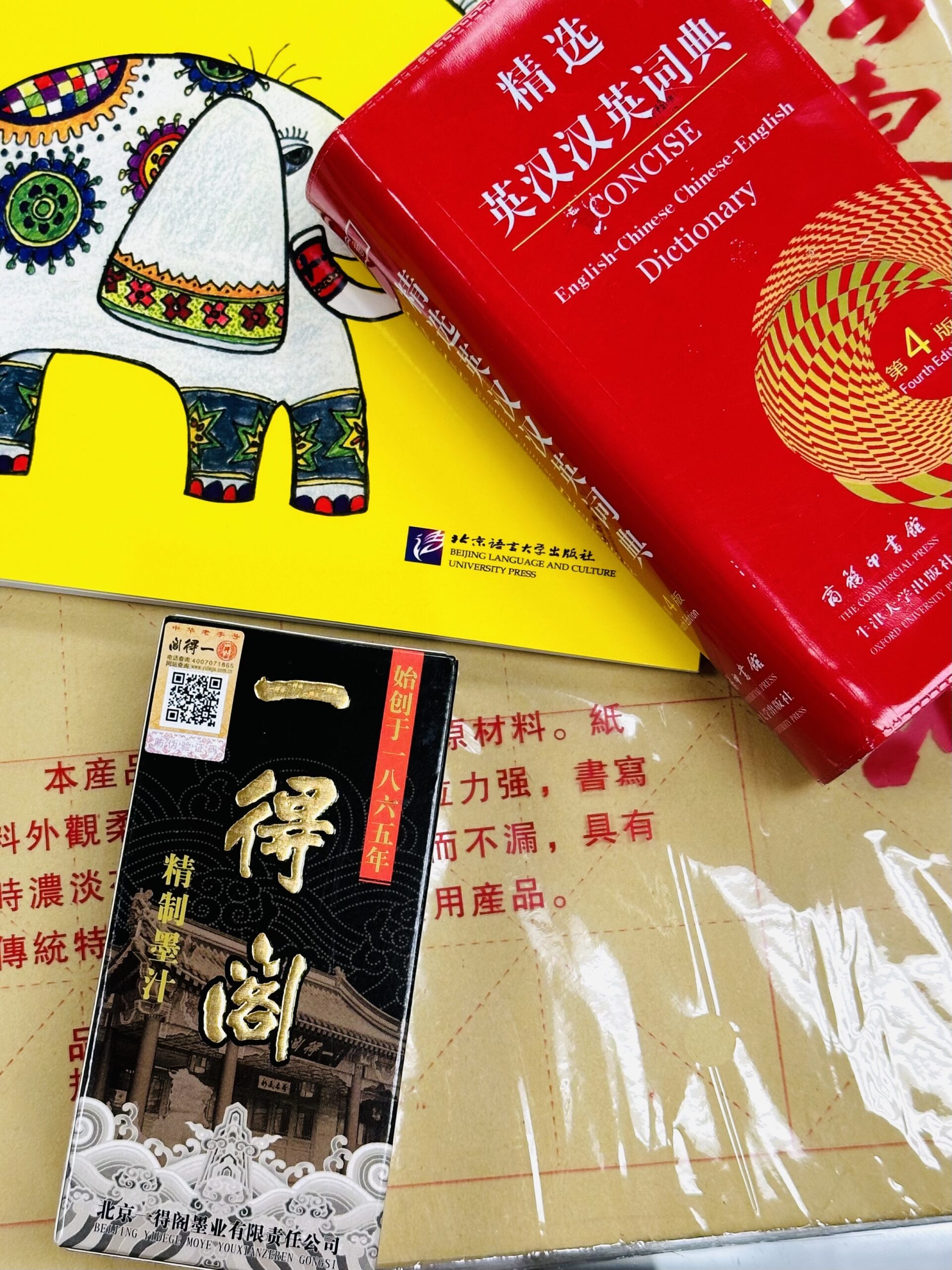Taiwan is the size of Indiana, with a population of almost 24 million people. The island is located roughly 100 miles southeast of China. Although an independent country since 1949’s political strife with the Chinese Communist Party, China still claims Taiwan as one of it’s provinces.
Despite the contentious relationship between these countries, their traditions, language and cuisine are similar. It’s attitudes and values are what differ. Taiwan’s democratically-elected president is a female — Tsai Ing-wen. Under her leadership, Taiwan was the first Asian country to legalize same-sex marriage in 2019. Taiwan has forged its own currency, passport, flag and military.
One centuries-old tradition remains the same in both countries — the art form of calligraphy. Literally meaning “beautiful writing,” the brush strokes are ranked alongside poetry as a form of self-expression. While calligraphy is rarely practiced by the younger generation, it is still an integral tradition and kept alive by their parents and grandparents.
How one writes calligraphy is as important as what one writes. This became evident to me when I recently took classes.
Calligraphy classes are taught within Asian diaspora’s around the world. Education and outreach programs offer hands-on workshops at local libraries, churches and museums.
Here are a few tips on how you can learn the fine art of Taiwanese calligraphy.

Find a Local Class
I had the absolute honor of meeting Tang Hao, an 87-year old calligraphy master living in San Diego. Hao learned the art as a young boy in China and has spent a lifetime perfecting his craft. He teaches calligraphy at the San Diego Chinese Mandarin Church.
Hoa demonstrated how calligraphy strokes are as unique from person-to-person as is penmanship. Some are more beautiful than others.
Through practice you create your own style. Hao paints the characters, adding his own feeling. It’s comparable to watching a great artist at work.
You must learn the foundations of calligraphy before advancing. For example, the brush is to be held with three fingers straight up and down. Not at an angle. Also, the order in which the strokes are painted conveys meaning. Techniques unfurl the more you practice.

Taiwanese Calligraphy Tools
The calligraphy tools you’ll need are minimal. Paper the consistency of tissue paper is made from the bark of blue sandalwood trees. Rice paper is also often used. Both absorb water and the moistened ink, and fold easily without ripping.
The brush has two components — the head and shaft. A beginner usually starts with a ten inch brush made of a hallow bamboo handle and goat hair tip. Larger projects warrant larger brushes.
Calligraphy ink has evolved from black sticks ground in water on a stone surface, to black liquid ink sold in plastic bottles, most commonly used now.
Purchasing a beginners’ calligraphy book will help you practice at home. Children’s books provide a rudimentary foundation. I used Easy Steps to Chinese for Kids 1A.
Another good book geared more towards adults is Beginners Guide to Chinese Calligraphy: An Introduction to Kaishu (Standard Script)
I highly encourage you to take a class. This allows you to ask questions and see the art form in action. Hands-on instruction in conjunction with workbooks will definitely start you on the road to mastering the beautiful art of Taiwanese calligraphy.
Related Posts:
Culture Trip: Twelve Countries, Twelve Traditions
Culture Trip: French Food Made Easy
Culture Trip: Learn Japanese Origami
Fun fact: Taiwan’s trash collection trucks play Beethoven’s Für Elisa to alert residents when they are arriving. This is the cue to run the waste out to the curb.


Comments